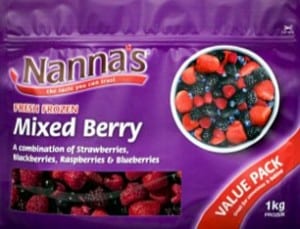 Australian media is currently flooded with stories about contaminated berries from China and recent cases of Hepatits A. Looking at the comments, there’s a lot of kneejerk reactions – mostly about labelling requirements or quality standards in China. That’s only to be expected. None of us want Hepatitis A, nor do we want anyone else to get it. But blanket statements about poor Chinese quality are based more in emotion than a good understanding of how quality control works.
Australian media is currently flooded with stories about contaminated berries from China and recent cases of Hepatits A. Looking at the comments, there’s a lot of kneejerk reactions – mostly about labelling requirements or quality standards in China. That’s only to be expected. None of us want Hepatitis A, nor do we want anyone else to get it. But blanket statements about poor Chinese quality are based more in emotion than a good understanding of how quality control works.
Hornet is not involved in any way with Patties Foods or the current contamination scare. Foodstuffs are not a significant portion of our sourcing projects. Nevertheless, we do know quite a lot about sourcing from China in general and quality control in particular. So here’s a few points to consider.
Quality Standards in China vary depending on whether goods are for export or for domestic use.
China is the world’s largest exporter. It exports goods of all kinds to the European Union, North America, Asia and the rest of the world. Each country or trading bloc has its own quality standards. Standards may apply to specific industries and product groups – electronics, food, pharmaceuticals, wood products, agricultural items, chemicals, vehicles and so on. There may also be cross-product quality standards for issues such as packaging and labelling.
China also supplies over 1.3 billion domestic consumers. It has its own quality standards for goods supplied to these consumers. There is no guarantee that domestic and overseas standards will be the same. In fact, they’re likely to be different. This is obvious if we think about something like electronics, where the mains power supply is different in different places, but it’s just as common in other sectors. Realistically, if each export market has its own standard, China cannot match them all – and on market size alone, Australia wouldn’t be first choice to copy.
Responsibility for compliance with Quality Standards rests with the purchaser, not the factory supplying the goods.
There are thousands of factories in China. Some of these have never manufactured goods for export. Others manufacture solely for export – even just for one single company. The relevance of overseas quality standards to factory operations depends on how much export business the supplier has – and which countries it exports to.
When Hornet selects suppliers, export experience is one consideration. It’s not the only consideration, or even the most important one. But factories which have exported, especially to more than one country, are often easier to work with. It’s not just quality issues, although those are important. There’s also issues like awareness of Western holidays, understanding international shipping lead-times, reading specifications in English and so on.
Quality inspection is vital, but it may not pick up every quality issue
Hornet conducts pre-shipment inspections on every shipment we look after. We want to be confident that goods are up to scratch before we make final payment, and before the goods leave China. But we don’t inspect every single item of a production run. We select a certain number – how many depends on the total production quantity; the kind of goods and client requirements – and we check those items against an exhaustive list of criteria.
It’s simply not possible to check every single item against every potential defect. But by checking some – and by choosing those at random – we identify almost every issue. Even more importantly, all our suppliers know we’re going to do a quality inspection. So they have a good reason not to cut corners. It’s especially the case since we use our own staff to carry out all but the most technical inspections. Our staff are aligned with us and our clients – they can’t be persuaded to overlook poor quality goods.
***
So with this background, what can we make of the current Patties Food berry issue?
CEO Philip Chaur says there is no confirmed evidence from testing that the berries are the cause of the hepatitis A outbreak. He has also spoken on public record about Patties Foods quality testing procedures. (25% of product batches were tested, which has now been increased to 100%.)One brand of berries (recalls have been issued for two brands) is the only identified link between all cases so far, but this is not final proof.
Whether Nanna’s Berries are eventually confirmed as the source of infection or not, the damage to the business has already been done. That’s clear from the media storm.
It’s possible that Patties Foods were really unlucky and one anomaly slipped through stringent quality processes.
It’s possible that their processes were not quite as stringent as they say.
None of those options mean that quality standards in China are universally poor. Juice bars including Boost Juice and Kick! also source berries from China. One key difference is that Boost say they always tested every batch, rather than 25% of batches. Perhaps that is the key lesson. It’s certainly the way Hornet do it.
